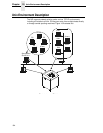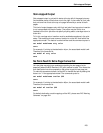
Printing Setup On HP-UX
197
Method 2, Command Line
The following procedure requires root privilege.
1. Assume a print queue (aka Unix printer).
Quality is desired.
2. DNS/IP Address name of NIC.
3. The dest d4prn is to be used on the NIC.
4. The default BSD interface file
rmodel
on the HP-UX system will be
used.
5. Issue the following commands (in order shown):
lpshut
(stops the print scheduler)
lpadmin -pQuality -mrmodel -v/dev/null -ormMyP5000LJ -
orpd4prn -ob3
(sets up queue)
lpsched
(restarts print scheduler)
accept Quality
(allows queue to accept jobs)
enable Quality
(allows queue to pass jobs)
Explanation of command line:
-m
indicates the model
rmodel
is to be associated with
Quality
-v
indicates the use of
/dev/null
as a file interlock to avoid contention
-orm
is the name of remote Print Server
-orp
is the name of the remote printer on the remote Print Server
-ob3
declares that the remote Print Server is a BSD type
Other useful commands are
lpstat
and
lpmove
[ /usr/lib ]
6. You can now do a test print:
lp -d Quality /etc/inetd.conf
HP-UX Typical Configuration, Parallel or Serial Attachment
Printers set up on HP-PB & CIO computers:
The Drivers shown in this table should be installed in the Kernel
Configuration.
Table 16. Drivers Required
Interface HP-PB
CIO 6 CHANNEL
MUX
CIO 16 CHANNEL
MUX
Serial mux2 mux0,cio_ca0 mux0_16,cio,ca0
Parallel lpr2 N/A N/A


















